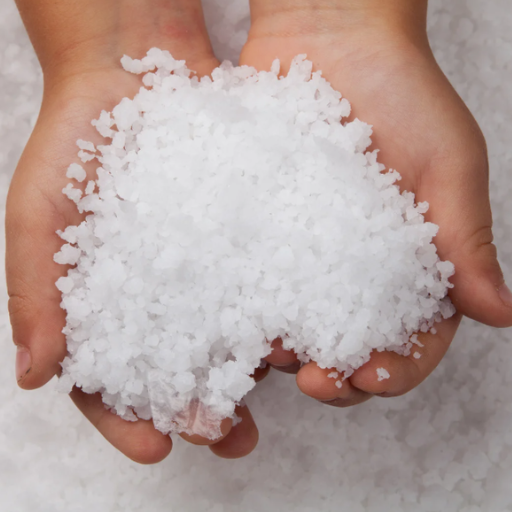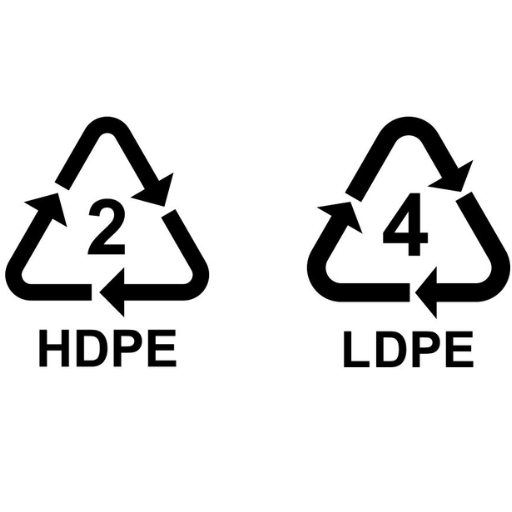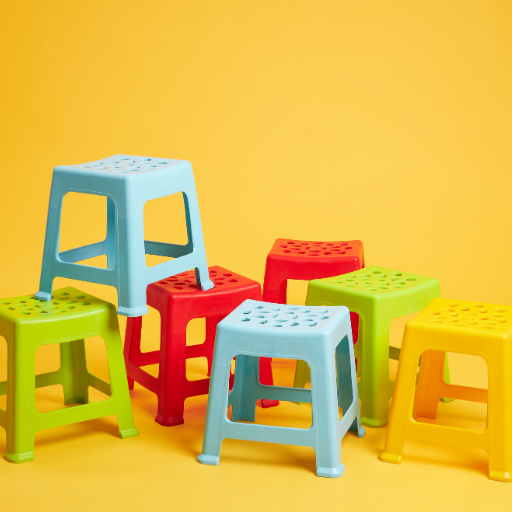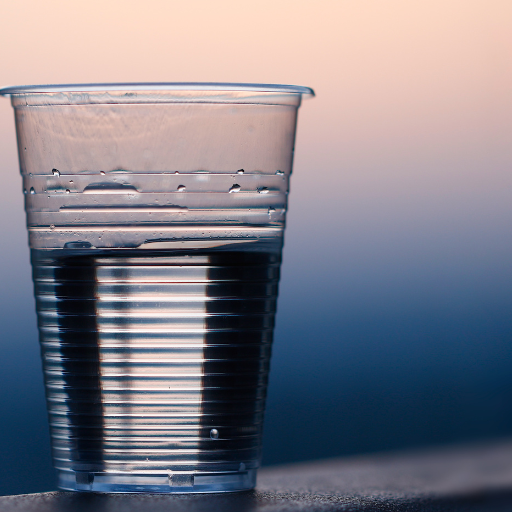In our lives, plastics have become ubiquitous; however, they come in a plethora of grades. A good example of this would be HDPE (High-Density Polyethylene) and LDPE (Low-Density Polyethylene). Both of these materials serve as the backbone of a host of products, from containers to pipes and much more. Whether you need to find the best-suited plastic for a manufacturing venture or want to select more green options for your daily life, knowing the differences and pros and cons of each material is important. This article will help you appreciate these kinds of plastics by explaining the differences, properties, and practical applications of HDPE and LDPE plastics.
What is HDPE?

HDPE is an acronym for High-Density Polyethylene. It is a type of plastic with a wide range of applications due to its impressive strength and durability. Furthermore, HDPE is light and easy to work with, impact resistant, moisture, chemical, and extreme temperature tolerant. Its most popular applications include manufacturing containers, HDEP pipes, and other household items. Most importantly, HDEP is eco-friendly because it is recyclable and can be used for various applications.
Characteristics of High-Density Polyethylene
With its remarkable traits, High-Density Polyethylene (HDPE) is highly sought after in many industries due to its:
- High Strength-to-Density Ratio
Durable and lightweight, HDPE’s density ranges from 0.93 to 0.97 g/cm³. This property aids in sustaining structural integrity when load bearing; hence, it is applicable in heavy duty pipes and storage tanks.
- Resistance to Impact and Weather
HDPE showcases significant physical resilience which is why this plastic is used for outdoor furniture as well as playground equipment. Also, HDPE is one of the best-performing materials when subjected to prolonged sunlight, as it not only tolerates, but also endures temperature shifts.
- Chemical Resistance
One of the highlighted properties of HDPE is that it is able to withstand most acids, bases, and even corrosive chemicals. Because of this, HDPE is a reliable material for storing chemicals as well as making parts for industrial machinery.
- Low Water Absorption
With a minimal water absorption rate (< 0.01%), HDPE is optimal in functional piping systems as it does not swell or degrade with constant exposure over time, making it ideal for water management projects.
- Eco-Friendly and Recyclable
New products such as pipes, containers, and bottles can be made from recycled HDPE. Recycling High-Density Polyethylene (HDPE) can significantly reduce the waste and energy associated with plastic production, shifting the world towards sustainable living.
- Thermal Properties
The melting point of HDPE falls within a range of 120°C to 180°C, influenced by factors such as the material’s molecular weight and density. Its thermal stability enable the HDPE to function efficiently in an extensive range of environments, including industrial processes which involve high temperatures.
These attributes of HDPE make it suitable for use in construction, packaging, and the automotive industry, proving that it is a versatile material.
Common Uses of HDPE Plastic
- Plastic Bottles and Containers
The making of plastic containers like milk jugs, juice bottles, and cleaning product containers utilizes HDPE (High-Density Polyethylene). It’s acrylonitrile resistant and withstands impact, moisture, and chemicals. An approximate 30% share of the global plastic containers market is claimed by HDPE, which certainly displays dominance.
- Pipes and Fittings
Water or gas distribution pipes, as well as sewage systems, use HDPE-High Density Polyethylene due to its high durability. It is also compatible to be use at home and industrial places due to withstand high pressures. Various reports indicate that HDPE pipes, when kept under the right conditions, can last more than fifty years, providing economical and sustainable value.
- Plastic Lumber
The production of plastic lumber (an eco-friendly alternative to real wood) utilizes recycled HDPE. The material is effective for constructing decors, fences, and outdoor furniture, as a feature of outdoor furniture that can withstand rot, moisture, and insect damage. Along with its recyclability, HDPE has a long-lasting impact on the market, driving its demand, especially for plastic lumber.
- Agricultural Applications
You will find HDPE plastic in irrigation systems: it is used for making irrigation pipes as well as greenhouse coverings and tarpaulins. Its resistance to UV rays and its durability in harsh weather aid in improving agricultural productivity around the world.
- Geomembranes and Liners
HDPE also plays a pivotal role in environmental engineering, being prominent in landfill and pond liners as well as canal linings. These applications rely on the impermeability of HDPE and its ability to withstand chemical corrosion. Research indicates that HDPE geomembranes can provide effective leakage and contamination prevention for many decades.
- Automotive Industry
HDPE is used for making several components of an automobile like fuel tanks, interior trims and bumpers. Being lightweight yet strong helps in further reductions to fuel consumption and improving vehicle efficiency, thus supporting sustainability efforts within the automotive industry.
There are more and more ways to use HDPE products because they are very durable, adaptable and, most importantly, can be recycled. Industries are expanding their horizons and meeting the modern-day HDPE issues.
Benefits of Using HDPE
1. Exceptional Durability: High-Density Polyethylene (HDPE) is well-known for being resistant to impact, corrosion, and wearing. Because of these characteristics, HDPE is useful for a long period of time in different fields. Its robust structure enables it to withstand extreme temperatures and harsh environmental conditions, making it reliable in industrial as well as consumer products.
2. Lightweight Nature: One of the primary uses of HDPE is lightweight fuel tanks, where it performs exceptionally well. This is especially important for the automotive industry, since the overall weight of a vehicle is reduced and fuel economy is improved, thanks to HDPE. Moreover, its use in packaging industries isalso widespread because of its low weight.
3. Superior Chemical Resistance: HDPE does not sag from the degrading effects of most chemicals, oils, and even solvents. Hence, it is perfect for both the storage and transport of goods in the chemical industries. This property also makes HDPE safe for packaging household and industrial cleaning products.
4. Environmentally Friendly: Many the facts that have been brought forward tell us how plastic waste can be reduced. One of the advantages which frightened my friends is that HDPE is fully recyclable. It is also one of the most recycled plastics in the world. Reports show that items derived from recycled HDPE, such as pipes and containers, are of equal quality and durability to those made from virgin plastic, which aids in a circular economy.
5. Cost-Effectiveness: Because HDPE is safe to manufacture and use, this makes it popular among many industries. Because of its broad application, manufacturing processes such as injection molding and blow molding can be utilized economically, lowering the cost of production while ensuring optimum quality of the goods produced.
6. Long Lifespan in Piping Systems: HDPE pipes have been used widely in water and sewer piping systems and their lifespan is expected to be between fifty to one hundred years in normal conditions. Their flexibility and resistance to cracking gives cost benefits during infrastructure upgrades or repairs.
The environmentally responsible uses of HDPE as a construction material, among others, continue to highlight its value in modern society. Its diverse attributes make certain advanced and sustainable applications will make use of it.
What is LDPE?

Low-Density Polyethylene (LDPE) is a type of plastic that has a low density and is frequently sought after because it’s lightweight and flexible. LDPE is effective in sustaining impact and is highly durable. Its uses extend to perilous substances, for it is chemically resistant. Considered one of the most adaptable types of plastic, LDPE serves numerous industrious purposes including packing materials, containers, bags and film wraps. Its properties enhance its softness and adaptability, making LDPE suitable for high pliability applications.
Properties of Low-Density Polyethylene
Low Density Polyethylene (LDPE) is relevant in various fields because of its wide-ranging properties. Its low density is one of the most noteworthy with values between 0.910–0.940 g/cm³, which results in a lightweight material ideal for flexible uses. In addition, LDPE’s melting point is between 105°C and 115°C, thus allowing easy processing which may be required in packaging and manufacturing.
LDPE is highly resistant to an extensive list of chemicals such as: Acids as well as Alcohols ensuring its durability in harsh environments. LDPE also has excellent barrier properties making it useful in moisture barrier applications such as water vapor protective packaging. LDPE also boast a tensile strength of 8 to 30 MPa, marking it as a strong and tough material for utilizations that need flexible requirements.
From an ecological point of view, LDPE is recyclable and is coded as plastic. It is relevant to mention that this thermoplastic material retains functionality at low temperatures due to its unmatched impact resistance even at freezing conditions. These combined factors make LDPE useful in an extensive range of industries from food storage, consumer products, agricultural films, insulation,n and much more.
Applications of LDPE
- Packaging Materials
LDPE is used extensively in the manufacture of films and sheets for packaging. Grocery bags, shrink wraps, and stretch films benefit from their flexibility, moisture resistance, and low cost.
- Food Storage Products
LDPE is a popular material for food containers, sandwich bags, and cling wraps due to its negligible chemical activity and safety. Its inert nature aids in preserving freshness while maintaining structural integrity under varying conditions.
- Agricultural Film
LDPE finds extensive application in agricultural films as greenhouse covers, mulch films, and silage sheets. These films afford environmental protection, soil management, enhanced crop yield, and improved soil management.
- Electrical and Cable Insulation
Usual materials need to have a certain degree of insulation along with durability, which LDPE possesses, making it a standard part for electrical wiring and cable covering. Devices and installations always need to be ensured free from electrical leakage, which this does safely.
- Industrial Liners
LDPE is a common material in industrial liners like tank liners and landfill lining systems. Its adaptiveness makes it effective for containment, environmental safety, and resistance to chemicals.
Advantages of LDPE
- Flexibility and Toughness
LDPE’s notable flexibility along with its impressive impact resistance makes it particularly suited for the production of products that undergo bending, stretching, or stress.
- Moisture Resistance
This material has outstanding moisture-blocking capabilities, which aid in protecting products from water vapor and humidity.
- Chemical Resistance
LDPE has the ability to resist various chemicals such as acids, bases, and organic solvents. These remarkable characteristics make it ideal for storing and transporting chemicals.
- Lightweight Nature
Being incredibly lightweight means that the overall weight of products containing it is reduced, thus lowering the cost of transportation and packaging.
- Recyclability
LDPE is easily recyclable which makes it environmentally friendly. Reprocessed LDPE ends up being used for making trash bags, containers, and even construction materials.
Key Differences Between HDPE and LDPE

- Density
Unlike LDPE, HDPE has a greater density, which makes it stronger, more rigid, and softer. LDPE is more flexible.
- Strength and Durability
Since HDPE is more impact-resistant and durable, it is suitable for heavy-duty work. LDPE is less durable, but excels in applications that are bendable and pliable.
- Temperature Resistance
Comparison of LDPE and HDPE shows that the former has a wider range of uses, since HDPE can only be used in high-temperature areas.
- Applications
Pipes and containers, as well as outdoor furniture, are common HDPE products. LDPE is used for plastic bags, film wrap, and squeeze bottles.
- Recyclability
Both LDPE and HDPE are recyclable, but the latter is more often recycled into stronger products, such as plastic lumber. LDPE recycling focuses on flexible goods, like bags and sheets.
Molecular Structure and Density
The density and other characteristics of a polymer are greatly affected by the molecular structure of the polymer. It is characterized by a linear polymer chain and minimal branching. This linear arrangement facilitates closer packing of polymer chains, resulting in increased polymer density of 0.941 to 0.965 g/cm³. This high density contributes to the strength and rigidity of HDPE, as well as the resistance to impact and chemical damage, which makes HDPE suitable for demanding applications.
Low-Density Polyethylene (LDPE), in contrast, is characterized by having a highly branched molecular structure. The higher branching allows less packing of polymer chains, leading to lower density in the range of 0.910 to 0.940 g/cm³. This lower density leads to flexibility and elasticity, which is ideal for lightweight materials such as film wraps and insulation. The strong contrast of crude differences of HDPE and LDPE in molecular structure and density explains their difference in industrial uses.
Physical Properties Comparison
While analyzing the physical characteristics of HDPE and LDPE, I observe that HDPE density is greater than that of LDPE. HDPE usually ranges from 0.941 to 0.965 g/cm³, and LDPE 0.910 g/cm³, leading to HDPE’s strength and rigidity. Comparatively, LDPE has lower density, leading to flexibility and elasticity. These differences arise due to the molecular structures of the two. HDPE has less branching, permitting the tight packing of polymer chains, while LDPE has more branches, preventing close packing.
Choosing HDPE or LDPE for Your Needs
In terms of performance characteristics, their abilities greatly impact the choice between HDPE and LDPE. HDPE’s strength, along with its impact, heat, and chemical resistance, makes it ideal for products such as piping, containers, and even milk jugs. Its melting point is around 130-137°C, which adds to its stability in demanding environments. LDPE, on the other hand, benefits from having a lower melting point of 105-115 °C, which offers flexibility for applications like plastic bags, squeeze bottles, and shrink wrap.
Recyclability and the environmental impact also play a major role. HDPE can be recycled into durable goods like benches and other park equipment, while recycling plastic products made from LDPE can be more challenging due to its softer nature. Irrespective of these factors, both materials remain lightweight, which reduces energy expenditure during transportation. Evaluating the mechanical properties, accompanied by the cost and environmental value, allows for easier selection of the appropriate polymer.
How are Plastic Products Made from HDPE and LDPE?

The production technique of plastic products manufactured from HDPE (high-density polyethylene) and LDPE (low-density polyethylene) entails particular steps that cater to the characteristics of the material. Standard practice is that the polymer granules or pellets are loaded into an extrusion or injection molding machine, which then proceeds to heat the material to as far as its melting point, creating a flexible, moldable state.
In the case of HDPE, its advantage lies in its greater crystallinity and density, which makes it suitable for blow molding or injection molding. Milk jugs, detergent bottles, and piping are created by pouring into the molds and shaping them by cooling. LDPE, on the other hand, is softer and more flexible, making it easier to process in film extrusion. Such products include, but are not limited to, plastic bags, shrink wraps, or liners. Thin, flexible sheets of plastic are produced from LDPE by extruding it through a die.
Maintaining the optimal strength, flexibility, and durability of plastic products requires meticulous temperature management during production, precision molding, followed by efficient cooling. Today, recycling procedures are being integrated, enabling the use of post-consumer HDPE and LDPE, thus enhancing sustainability and resource conservation.
The Manufacturing Process of HDPE
High-Density Polyethylene (HDPE) is produced by a specific method known as polymerization. The most common method employed is the low pressure partitioning of ethylene, and is commonly done using Ziegler-Natta or metallocene catalysts. This process ensures that long chains of ethylene molecules are assembled with little to no branching which is why HDPE has high strength and a dense structure.
The polymerization step is often done in gas-phase or slurry-phase reactors, where the temperature is maintained between 70-300 degrees Celsius and the pressure is held anywhere from 10-80 bars, depending on the method. Newer reactors are built to achieve the best operational output. They reach nearly 99% conversion rates, which means lower waste, recovering more materials, and consuming less energy.
Sustainability in HDPE Production
Adopting energy-saving technologies goes hand in hand with having lower carbon emissions for manufacturers. In addition to this, recycled High-Density Polyethylene (HDPE) is becoming more popular. Take, for instance, studies show that recycling HDPE saves about 88% of energy in comparison to producing it from virgin materials. Improved recycling systems and infrastructure permit the reuse of HDPE materials for piping, containers, and many other household items, which endorses sustainable manufacturing.
Such improvements in processes and technologies show the grade of innovation and the ecological focus of the HDPE manufacturing industry, which is in support of the global shift to circular economies and lower ecological footprints.
Production Techniques for LDPE
Free-radical polymerization LDPE undergoes a high-pressure polymerization process. It operates at pressures from 1,000 to 3,000 bar and temperatures of 200 degrees Celsius to 300 degrees Celsius. This creates polymer chains with a branched structure, which allows for flexibility and softness.
There have been recent improvements in production techniques that have improved efficiency and reduced energy inputs. For example, newer tubular and autoclave reactors are designed to allow better control of the reaction conditions, which improves polymer consistency. New industry reports say that around 25 million metric tons of LDPE are being produced each year, and that manufacturers are trying to reduce waste and emissions during production.
Bioethanol produced from sugarcane and other biomass can now renewable feedstocks be LDPE’s added to the list of renewable feedstocks. This reduced the dependancy on fossil fuels and also greatly reduced the carbon emissions associated with producing the material. This, in turn, makes the process more sustainable and moves it towards becoming fully eco-friendly.
Recycling HDPE and LDPE
The significance of HDPE (High-Density Polyethylene) and LDPE (Low-Density Polyethylene) recycling is great in terms of alleviating the plastic waste issue and protecting the environment. Items such as milk containers, detergent bottles, and pipes are made from HDPE, which is one of the most recyclable plastics, as it can be processed into new products. Although the recycling rate of HDPE is as low as 30-34% even in well-developed recycling nations, it is still better than many other forms of plastic. LDPE makes use of shopping bags, plastic wrap, and squeezable bottles. It has proven difficult to recycle because of its pliability and lightweight, but technologies are continually improving.
The recycling process for HDPE includes collection, washing, shredding, and heating the plastic to form small pellets. Such pellets can be used to manufacture new plastic products like pipes or even outdoor furniture. LDPE benefits from new innovations like chemical recycling, which can turn LDPE back into monomers. This process facilitates creating a new high-quality substance and still retains its original characteristics.
Moreover, separated public drop-off locations and enhanced curbside collection programs are encouraging higher recovery rates for these plastics. Some areas claim to achieve recovery rates of 50% for LDPE when there is dedicated collection drive. The introduction of policies such as extended producer responsibility (EPR) in conjunction with heightened public education on proper segregation sustains the recycling ecosystem supporting both HDPE and LDPE. Everything done is proof of the growing need towards circular plastic life cycle aimed toward sustainability.
Which Type of Plastic is Right for You?

Every type of plastic serves its own purpose. For long-lasting and heavy-duty tasks, HDPE (High-Density Polyethylene) is ideal due to its strength, resistance to impact, and versatility. It works well for products like containers, piping, and everyday household goods. LDPE (Low Density Polyethylene) is preferable where flexibility is needed. It is typically used for bags, wrappers, and squeeze containers. Consider a combination of your requirements, which include durability, adaptability, and environmental concerns, and choose plastics that are recyclable to help support sustainability.
Factors to Consider When Choosing HDPE or LDPE
Evaluating the properties and applications of HDPE and LDPE will help you in a great way while meeting your project requirements.
- Strength and Durability
High-density polyethylene (HDPE) is far more durable and offers greater tensile strength, making it preferable in situations where there is heavy loading. These include industrial containers, underground piping, and even cutting boards. HDPE also has better weather impact resistance than its counterpart and its tensile strength is approximately 4,000 psi. LDPE’s (Low Density Polyethylene) tensile strength is significantly lower at around 1,700 psi.
- Flexibility and Weight
Hence LDPE is easier to stretch, it is less dense than HDPE which makes it lighter. Because of this properties it is also easier to use in making grocery bags, plastic films, and squeezable bottles. Also, its low density structure makes it blow resistant to tearing. This makes it easy in packaging and storing light products.
- Temperature Resistance
When it comes to withstanding high temperature, HDPE takes the lead, enduring operational temperatures up to 120 degrees celsius (248 degrees Fahrenheit). LDPE on the other hand works fine under a heat exposure cap of 80 degrees celsius (176 degrees Fahrenheit). Hence, HDPE is better choice for sky surrounding places that are prone to heat or sterilization.
- Cost Efficiency
Though both HDPE and LDPE are economical options, LDPE tends to be more affordable because of production methods and lower density. Nevertheless, the cost alternative has to be evaluated alongside performance and durability in order to ensure savings over the long haul.
- Environmental Impact
HDPE is easier to recycle compared to LDPE because of its more rigid structure and its acceptance in recycling programs. HDPE is better suited for sustainability objectives since its recycling codes are more readily accepted by recycling facilities compared to LDPE films, which need specialized programs.
- Application-Specific Preferences
In situations where clarity or transparency is vital, like food-grade applications, LDPE would be more advantageous due to translucence, while HDPE is generally opaque and more suitable for industrial or heavy-duty applications.
Looking into these factors will help guarantee that the chosen material corresponds exactly with the required performance, budget, and environmental goals. Always consider the whole lifecycle impact along with recyclability when making your decision.
Environmental Impact of HDPE and LDPE
The impacts on the environment caused by HDPE and LDPE differ quite a lot due to their production processes, recyclability, and degradation rates. The density of HDPE is greater than that of LDPE, which means its raw materials are comparatively lower, making the production of HDPE slightly more efficient. Regardless, both types of HDPE and LDPE are sourced from non-renewable fossil fuels, HDPE being slightly more resource efficient, still contribute to the emissions of greenhouse gases during manufacturing, along with LDPE.
In the sector of recyclability, HDPE widens the gap with its advantage. HDPE is accepted in recycling programs and can be manufactured into new products such as pipes, bottles, and containers. LDPE on the other hand is not widely accepted for recycling due to its low density that makes sorting and processing a challenge. Due to not having an established recycling infrastructure, LDPE waste usually ends up in landfills or gets pollutes the environment.
A study reported that LDPE takes around 500-1000 years to decompose in landfills. During this period, the degradation of LDPE microplastics is emitted, which is harmful for ecosystems. While HDPE is more resistant to turning into microplastics, it too is slow to degrade, taking centuries. New advancements in chemical recycling technology are being created to counter these issues for both LDPE and HDPE.
both HDPE and LDPE pose threats to Mother Nature, so industries and consumers alike are recommended to pay attention towards minimizing use of single-use plastic, using recycled materials, and switching to eco-friendly options whenever feasible.
Cost-Effectiveness of HDPE vs LDPE
In terms of material expenses and expected HDPE (High-Density Polyethylene) and LDPE (Low-Density Polyethylene) over their entire lifespan, cost-effectiveness encompasses both. Manufacturing costs are lower for HDPE because it has a higher strength-to-density ratio, meaning lighter and thinner material can be used without sacrificing durability. This makes HDPE more economical for piping, containers, and structural applications where strength and endurance are needed.
LDPE, on the other hand, is slightly more expensive to produce on a per-unit basis but its superior flexibility, transparency, and superior sealability makes it more useful for certain applications. Its use in film applications including plastic bags and food packaging exemplifies these essential attributes. Its flexible structure decreases wear and tear which means less replacement and lower lifecycle costs in other suitable applications.
From a manufacturing point of view, HDPE is usually more energy-efficient to produce, requiring less energy per pound of product than LDPE. Also, the recycling of HDPE is easier because of its higher density. Globally, HDPE products like milk jugs and detergent bottles have better recycling rates than LDPE films, which are difficult to recycle due to contamination and additional processing requirements.
In the end, the determination to use HDPE or LDPE is made based on the intended function of the material, being cost-efficient. For structural and high-stress applications, HDPE is more durable and economical over time. On the other hand, LDPE is more advantageous for flexible and lightweight applications, offering better performance and adequate cost effectiveness where strength is less important. Continuous efforts to improve the materials’ recyclability and lifecycle costs—critical factors in the current shift towards a more sustainable economy—benefit both materials.
Reference Sources
- A Comparative Bibliometric Analysis on Plastic Waste Recycling:
- Key Findings: This study highlights the trends in circular economy practices and plastic waste recycling. It emphasizes the importance of transitioning from a linear to a circular economy to reduce resource consumption and waste.
- Methodology: A bibliometric analysis was conducted using Scopus and Web of Science databases, analyzing over 2,000 articles from 2014 to 2023.
- Effect of Mass and Temperature Rate on the Thermal Properties of HDPE:
- Key Findings: The study explored how sample mass and heating rates influence the thermal properties of HDPE. It found that larger sample masses and higher heating rates shift melting and crystallization temperatures.
- Methodology: Differential Scanning Calorimetry (DSC) was used to analyze HDPE samples under varying conditions.
- Chemical Recycling of LDPE and HDPE:
- Key Findings: This research examined chemical recycling methods like pyrolysis and dissolution/reprecipitation for LDPE and HDPE. Pyrolysis was found to produce valuable hydrocarbons, while dissolution/reprecipitation achieved high polymer recovery.
- Methodology: Experiments were conducted using model polymers and waste products, with analysis of the resulting materials’ properties.
- Top HDPE Plastic Pellets Suppliers in China
Frequently Asked Questions (FAQs)
Q: What is the main difference between LDPE and HDPE plastics?
A: The main difference between LDPE and HDPE plastics lies in their density and structural composition. LDPE, or Low-Density Polyethylene, has a highly branched structure, making it less dense and more flexible. HDPE, or High-Density Polyethylene, has a linear structure, resulting in a higher density and greater strength.
Q: How does the linear structure of HDPE affect its properties?
A: HDPE’s linear structure contributes to its strength and rigidity, making it suitable for applications requiring durability and resistance to impact. This structure also results in a higher melting point compared to LDPE, making HDPE ideal for items like beverage bottles and heavy-duty containers.
Q: In what applications is LDPE commonly used?
A: LDPE is commonly used in applications requiring flexibility and low strength, such as plastic bags, film wraps, and flexible container lids. Its highly branched structure provides it with a lower tensile strength but greater flexibility compared to HDPE.
Q: Why is HDPE frequently used for packaging?
A: HDPE is frequently used for packaging because of its high density and strength, which provide excellent impact resistance and durability. This makes it suitable for packaging products such as milk jugs, detergent bottles, and other types of containers that require sturdiness.
Q: What are the environmental considerations of using LDPE vs HDPE?
A: Both LDPE and HDPE are recyclable, but they are processed differently. HDPE is assigned the recycling number 2, and LDPE is assigned the number 4. HDPE is generally more widely recycled than LDPE, making it a more environmentally friendly option in regions with robust recycling programs.
Q: What are the melting points of LDPE and HDPE, and how do they affect their uses?
A: LDPE has a lower melting point compared to HDPE, which makes it ideal for applications requiring heat sealing. HDPE’s higher melting point allows it to withstand higher temperatures, making it suitable for items like hot liquid containers and other high-temperature applications.
Q: How are LDPE and HDPE produced, and does this affect their properties?
A: LDPE is produced at lower pressures and temperatures, resulting in a highly branched structure, while HDPE is formed under higher pressures, producing a more linear and crystalline structure. These production differences impact their respective densities and mechanical properties, with HDPE being stronger and more rigid, and LDPE being more flexible.
Q: When should one choose LDPE over HDPE?
A: One should choose LDPE over HDPE when flexibility, lower cost, and ease of processing are priorities. LDPE is best suited for applications like film wraps and plastic bags, where ease of handling and flexibility are more critical than strength.
Q: What roles do LDPE and HDPE play in recycling efforts?
A: Both LDPE and HDPE play significant roles in recycling efforts as they are common types of polyethylene. HDPE is more widely recycled due to its higher value and greater demand in the recycled materials market, while LDPE is also recyclable but less commonly accepted in curbside programs.

